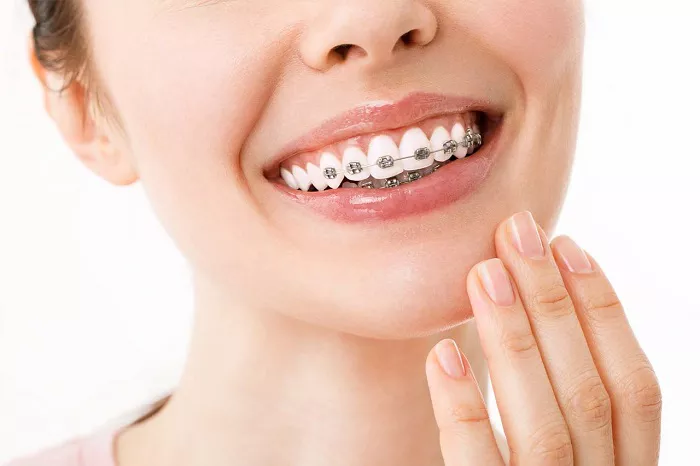Choosing the right orthodontic treatment is a significant decision that can impact your oral health, appearance, and overall quality of life. With so many options available, from traditional metal braces to clear aligners, it can be overwhelming to determine which treatment is best for you or your child. This article will provide a comprehensive guide to help you navigate the process of selecting the right orthodontic treatment, ensuring you make an informed and confident choice.
Understanding Orthodontic Treatment Options
Orthodontic treatment involves the use of various appliances to correct misaligned teeth and jaws. The type of treatment recommended depends on the specific dental issues being addressed. Here are the most common orthodontic treatment options:
Traditional Metal Braces
Metal braces are the most common and effective option for correcting a wide range of orthodontic issues. They consist of metal brackets bonded to the teeth and connected by wires. The wires are adjusted periodically to move the teeth into the desired positions.
Ceramic Braces
Ceramic braces are similar to metal braces but use clear or tooth-colored brackets, making them less noticeable. They are a popular choice for adults and teens who want a more discreet option.
Lingual Braces
Lingual braces are placed on the back of the teeth, making them invisible from the front. They are custom-made to fit the shape of your teeth and are ideal for those who want a completely hidden treatment.
Clear Aligners
Clear aligners, such as Invisalign, are removable trays made of clear plastic. They are custom-made to fit your teeth and are replaced every 1-2 weeks to gradually move the teeth. Clear aligners are a popular choice for adults and teens who want a discreet and convenient option.
Retainers
Retainers are used after orthodontic treatment to maintain the position of the teeth. They can be removable or fixed and are essential for preventing relapse.
Orthodontic Appliances
In some cases, additional appliances like headgear, expanders, or rubber bands may be used to correct jaw alignment or bite issues.
Factors to Consider When Choosing Orthodontic Treatment
Selecting the right orthodontic treatment involves considering several factors to ensure the chosen method aligns with your needs, lifestyle, and budget. Here are the key factors to consider:
Severity of the Orthodontic Issue
The complexity of your dental issue plays a significant role in determining the appropriate treatment. Severe cases may require traditional braces, while mild to moderate issues can often be addressed with clear aligners.
Age of the Patient
Children and teenagers may benefit from traditional braces, as their jaws are still growing and more responsive to treatment. Adults may prefer discreet options like clear aligners or ceramic braces.
Lifestyle and Preferences
Consider your daily routine and preferences. If you value discretion and convenience, clear aligners may be the best choice. If you don’t mind the appearance of braces and want a highly effective treatment, traditional braces may be suitable.
Treatment Duration
The length of treatment varies depending on the method and the severity of the issue. Discuss the estimated treatment duration with your orthodontist to set realistic expectations.
Cost
Orthodontic treatment can be a significant investment. Compare the costs of different options and consider your budget. Keep in mind that some treatments may be more cost-effective in the long run due to their effectiveness and durability.
Maintenance and Care
Different treatments require varying levels of maintenance. Clear aligners need to be removed for eating and cleaning, while braces require careful brushing and flossing to avoid plaque buildup.
Step-by-Step Guide to Choosing the Right Orthodontic Treatment
Schedule an Initial Consultation
The first step is to schedule an initial consultation with an orthodontist. During this visit, they will evaluate your teeth and jaws, take X-rays, and discuss your treatment goals.
Discuss Your Concerns and Preferences
Be open about your concerns, preferences, and lifestyle. This will help your orthodontist tailor their recommendations to your specific needs.
Evaluate Treatment Options
Based on the evaluation, your orthodontist will present the available treatment options. Discuss the pros and cons of each option, including effectiveness, duration, cost, and maintenance.
Consider Your Budget
Orthodontic treatment can be costly, so it’s essential to consider your budget. Ask about payment plans or financing options if needed.
Make an Informed Decision
After considering all factors, make an informed decision that aligns with your needs, preferences, and budget. Remember, the right treatment is the one that best addresses your orthodontic issues while fitting seamlessly into your lifestyle.
Conclusion
Choosing the right orthodontic treatment is a crucial decision that can significantly impact your oral health, appearance, and overall well-being. By considering factors like the severity of your orthodontic issue, age, lifestyle, budget, and orthodontist’s recommendation, you can make an informed choice that best suits your needs.Remember, the right treatment is not just about achieving a beautiful smile; it’s about improving function, preventing future issues, and enhancing your overall quality of life. Consult with an orthodontist to explore your options and take the first step toward a healthier, more confident smile. With the right treatment plan, you can achieve the results you desire and enjoy the long-term benefits of proper dental alignment.

